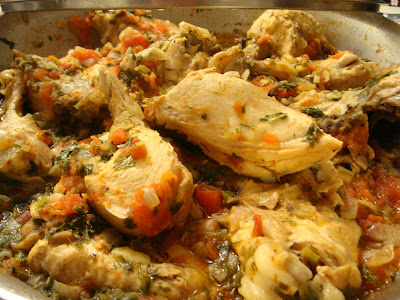 We had quite the bizarre weather here in Tel Aviv today. Despite it being January, warm and dusty air filled the city and we decided to stay home in bed. Around mid-afternoon we started to get hungry and cooked up this light summery (and weather appropriate) dish of tofu and rice noodles. This delicate sweet-sour-spicy dish also makes a great "take it to the office" lunch.
We had quite the bizarre weather here in Tel Aviv today. Despite it being January, warm and dusty air filled the city and we decided to stay home in bed. Around mid-afternoon we started to get hungry and cooked up this light summery (and weather appropriate) dish of tofu and rice noodles. This delicate sweet-sour-spicy dish also makes a great "take it to the office" lunch.For the caramelized tofu:
300 gr tofu
4 tbs soy sauce
1 tbs sugar
For the noodles:
250 gr cooked rice noodles
2 tbs vegetable oil
1 tbs finely chopped garlic
1/2 tsp finely chopped red chili
2 tbs soy sauce
2 tsp fresh lemon juice
1/2 tsp sesame oil
1/4 cup chopped coriander
The Recipe:
Prepare the tofu. In a large bowl, mix the soy sauce with the sugar. Slice the tofu into 1cm slices and add to the bowl. Mix well, making sure the tofu slices are completely covered in thee soy sauce mixture.
Place a grill plate over very high heat and wait until it is very hot. Place the tofu slices on the hot grill plate and grill for a 5 minutes on each side. Lower the heat and let grill until the tofu browns. Set aside and let cool. When the tofu cools, slice into 1cm slices.
For the sauce, fry the garlic and chili in the vegetable oil for a couple of minutes in a small pan. Add soy sauce, lemon juice and sesame oil and let cook for another 2 minutes.
Throw the chopped coriander, tofu and cooked noodles into a large bowl. Add the sauce and mix well.
Serve in personal bowls with a slice of lemon.











































